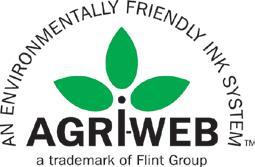












All services are FREE to Job Seekers... the VSCPA Career Center is your connection to finding your dream job.

• Search hundreds of local and nationwide openings
• Build your own in-depth profile to market your skills and talent
• Upload your resume and update it as often as you want (confidentially, if you prefer)
• Set up a personal Job Search Agent and be alerted when new jobs are posted
• Utilize the Career Learning Center to take control of your career selfmanagement
Attract top talent! We are your recruitement portal to highlyqualified CPA professionals. Post your jobs today.

• Find the best product and price to meet your staffing needs
• Search qualified candidates based on job specific qualifications
• Create an online Resume Agent to email qualified candidates right to your inbox daily
• Get help with government compliance, job posting tips, assistance writing job ads and other resources
the Career Learning Center
Resources
Agent
Upload your resume or post your jobs today at CAREERCENTER.VSCPA.COM... and be sure to visit us often!
 Your one-stop resource for the CPA industry.
Your one-stop resource for the CPA industry.
for agricultural
$52 billion business, and
helps keep the agricultural financial ship moving?
Soybeans, wheat, berries, poultry. You name it, CPAs have accounted for it. Meet a few who work in agriculture.

OVERLOAD
There are so many changes to tax law, it can be hard to keep up. Fortunately, there are resources that can help you and processes you can employ.
How should companies account for goodwill after a business combination? An update from the Financial Accounting Standards Board provides guidance.
Supervising, coaching and mentoring: What’s the difference?
General Assembly approves export tax incentives

Cost Segregation
A. Berk, CPA
Benefit Advisors
Group
of the Virginia Society of CPAs.

bimonthly for
to
the
of
VIRGINIA SOCIETY OF CPAs 4309 Cox Road Glen Allen, VA 23060 (800) 733-8272
Fax: (804) 273-1741 www.vscpa.com
Jill Edmonds
Managing Editor disclosures@vscpa.com
Chip Knighton Contributing Editor
cknighton@vscpa.com
Jenny Chu, CAE Marketing & Communications Director jchu@vscpa.com
Joan D. Aaron, CPA
Lindsay S. Andrews, CPA
Adam G. Chaikin, CPA
David L. Cotton, CPA
Gary D. Dittmer, CPA
Elizabeth M. Helle, CPA
Clare K. Levison, CPA
Kevin S. Matthews, CPA David R. Peters, CPA George D. Strudgeon, CPA Thomas L. Visotsky, CPA
Articles and advertising for future issues are due by 5 p.m. on the following dates:
July/Aug. 2014 May 5, 2014
Sept./Oct. 2014 July 7, 2014
Nov./Dec. 2014 Sept. 1, 2014
Jan./Feb. 2015 Nov. 3, 2014
March/April 2015 Jan. 5, 2015
May/June 2015 March 2, 2015
Statements of fact and opinion are made by the authors alone and do not imply an opinion on the part of the officers, members or editorial staff.
We take for granted how much information is accumulated on one small, easily lost or stolen piece of hardware. Unfortunately even the most innocuous data can become valuable information to an attacker. Here is some of the most common data stored on a mobile device, and how it can be used against you or your business.
BRYAN NEWLIN, CPA, Yount, Hyde & Barbour, PC, Winchester
On the VSCPA being named as a 2014 Best Place to Work: We are very blessed to work for the VSCPA! The best place to work at!
ROCIO AMADOR GIBBS, VSCPA Member Relations Coordinator
“Providing services to an employer” is defined in section 18VAC5-22-40 of the VBOA regulations, which are available at www.boa.virginia.gov. Essentially, substantial use of accounting, financial, tax, or other similar skills would make a CPA ineligible for this status.
The only way to make yourself a flexible person that can adapt to any environment is to invest your time in other areas besides academics.
ALICE YEH, KPMG, Washington, D.C.
Speaking at @VSCPA government day live webcast about Excel 2013 new features. — @JBCPA
@VSCPANews We’re celebrating CPAs with our #CPAPOWERED campaign! http://ar.gy/ CPAta Can you help us spread the word? — @AICPA
The Truth Behind CPA Firm Client Satisfaction http://ow.ly/2EqTsM via @VSCPANews @sageworks #taxtime — @MELLOYD
@VSCPANews Thanks so much for coming to NVCC last night. It was great to hear personal stories and meet people who want to see us succeed. — @CATRINAMPHOTO
BLOG: www.cpacafe.com
CONNECT: http://connect.vscpa.com
TWITTER: @VSCPANews, @FinancialFit
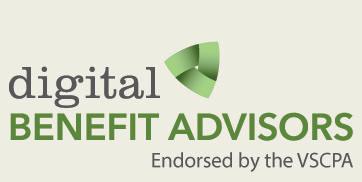
LINKEDIN: http://tinyurl.com/VSCPALinkedInGroup FACEBOOK: www.facebook.com/VSCPA
Get in touch At the Virginia Society of CPAs, we love to hear from you. Whether it’s a quick email to a staff member, chat on the phone, Disclosures letter to the editor, tweet, blog comment or something different altogether, let us know what you’re talking about, how you feel about different issues affecting CPAs and how we can help.
In prior Disclosures issues, we covered how to use the CONCATENATE function to combine information from multiple cells into a single cell. This month we will discuss three options for separating information within a single cell into different cells using the functions of LEFT, RIGHT and MID. These functions return a specified number of characters from a string of text.

Despite significant staffing declines, the Criminal Investigation division of the U.S. Internal Revenue Service (IRS) managed to convict more than 93 percent of their targets for tax fraud last year. 2013 was a busy year; the division started 5,314 cases and recommended 4,364 for prosecution, which was an increase of almost 18 percent over 2012.
The IRS went after a wide variety of offenders, from nonfilers to promoters of abusive tax schemes. Here are the Criminal Investigation division’s top priorities from 2013:
For example, if the cell A1 contained a six-digit account code followed by an account name “123456Cash” and you wanted this information split into different cells, you could write “=LEFT(A1,6)” in one cell to get “123456” and “=RIGHT(A1,4)” in another cell to get “Cash.” On the other hand, let’s say you have a long list of account codes and names that you want to separate. If all of your account codes are the same length and on the left-hand side, you are in luck. You can use the MID function to grab just the account name. In the example above, you could use “=MID(A1,7,100)” to get “Cash.” The MID function goes to the cell you want the text from (A1) and starts counting each character from left to right. Once it gets to the start position (7), it will start returning the string of text, again moving left to right, until it reaches the number of characters you specify in the formula (100). I specified returning 100 characters when Cash is only 4 because if I had a long list of account codes and names I am sure that Cash, although very important, would be one of the shorter names and I could use the same formula all the way down the list. n
nabbed a former employee who blackmailed taxpayers into paying her a $400 fee to keep her from interfering with their refunds. The IRS was also responsible for the public corruption case involving former U.S. Rep. Jesse Jackson Jr. (D-Ill.), who was sentenced to 30 months in prison for conspiring to defraud his re-election campaign.
In an interesting case, the
GEORGE D. STRUDGEON, CPA, CGFM, is an audit director at the Virginia Auditor of Public Accounts in Richmond. He is a member of the VSCPA Editorial Task Force. Email him if you have Excel topics you want him to cover.
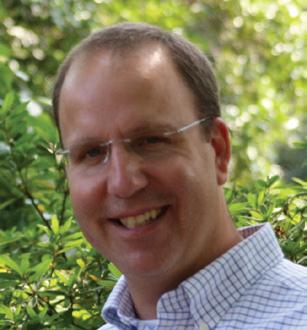
* george.strudgeon@gmail.com. connect.vscpa.com/GeorgeStrudgeon

If you have career aspirations to become a Chief Financial Officer (CFO), you would be wise to focus on 10 key skills and traits identified in the “Future Pathways to Financial Leadership” report from the Association of Chartered Certified Accountants (ACCA) and Institute of Management Accountants (IMA). Current financial leaders see these traits as imperative for future CFOs.
1. Know your fundamentals — Have experience in the core finance areas of financial and management accounting.
See strategy and business experience as the new baseline — Deep business experience will be highly valuable.
3. Get knowledge in insight and analytics — Data will become imperative to finance teams.
Get risk experience — Businesses will face even more traditional and emerging risks.
Become a deal maker — Experience in mergers and acquisitions as well as change management will be important.
Become customer-focused — Engage with stakeholders and cultivate relationships.
Focus on the management skills that matter — These are leadership, communication, strategic thinking and change management.
Prepare for more regulation — Future CFOs must be comfortable operating in a regulated environment with broad reporting requirements.
9. Get connected — The influence of social, mobile and cloud technologies will only increase.
10. Expand your footprint — Future leaders must be adept working in global environments and leading diverse teams across mature and emerging markets.
Find the ACCA / IMA report at http://tinyurl.com/ p2f9jzx or scan the QR code with your smartphone.

in need? The American Institute of CPAs (AICPA) Benevolent Fund may be able to help. The Benevolent Fund, established in 1933, assists AICPA members through temporary periods of financial difficulty and provides subsistence aid to members and their families in cases of serious illness, accident or death of the primary source of family income. For example, the Fund helped several members with temporary assistance after Hurricane Katrina.
Types of assistance include temporary monthly living expenses; temporary monthly medical, mental and prescription expense payments that exceed insurance coverage; Medicare or other health insurance premiums; most medically necessary services for dependent children (under age 21); one-time emergency grants; and other assistance as deemed appropriate by the AICPA Board of Trustees.
As an Alabama recipient said, “The AICPA Benevolent Fund was truly an answer to my prayers when things were very dark. My famliy would not have been able to survive further devastation without the Fund.”
You can help, too. The AICPA takes contributions directly to the Benevolent Fund at http://tinyurl.com/BenevolentFund. n

Later this year, you’ll have a new, easier-to-understand Code of Professional Conduct from the American Institute of CPAs (AICPA). In January, the Professional Ethics Executive Committee approved revisions, which will become effective Dec. 15, 2014 (with delayed implementation for two conceptual frameworks). The AICPA delayed the effective date of the new Code so users can become familiar with the new frameworks and update their internal policies and procedures, and the AICPA Professional Ethics Division will be releasing a toolkit for assistance.
The most significant additions are two conceptual frameworks: one for CPAs in public practice and one for members working in business and industry. These will discuss issues that are not otherwise addressed in the Code. Using the frameworks, users can identify threats to compliance with the rules,
evaluate the significance of those threats and then apply the appropriate safeguards.
The new Code will also be intutitively organized. Rather than organized by rule and then interpretive guidance, the reformatted Code separates guidance by lines of business and then topic. Topics then may be further broken down. The change should help CPAs quickly navigate the document and find pertinent content.
The document will be available electronically and contain basic and advanced search tools, the ability to email links or embed them in documents, hyperlinks to references and more. Users will be able to set up free accounts so they can save searches, notes and bookmarks, personalizing their experiences. n
Don’t miss out on fun membership events, like the CPA Day of Service. Here,VSCPA members volunteered for the 2012 Day of Service.

Make sure you lock in your benefits for the 2014–2015 VSCPA membership year and renew today at www.vscpa.com/Renew! You’ll get the same great benefits, from discounts on CPE opportunities and affinity partners to access to information in Disclosures and Connect, the VSCPA’s interactive, membersonly online directory — where everyone is talking. n
In response to the VSCPA’s request to create a formal CPA licensure status for those CPAs who are inactive in the profession, the Virginia Board of Accountancy (VBOA) has implemented two new license statuses for active CPAs.
Effective now and deals with the renewal status for late licensees. Under current statute, individuals holding a CPA license have an additional 12 months after their license expiration
date to renew the license. During that grace period, their licensee status will be “Active — Renewal Fee Delinquent,” but they would still be considered to hold a Virginia license. Previously, this status was known as “Expired — Late Renewal.” Licenses not renewed by the end of the 12-month period would be considered “Expired” and the licensee would have to reapply for licensure.
Target effective date is July 1, 2014, and affects CPAs who want to maintain
their licenses but are not providing services to an employer or the public and don’t expect to for a period of time. CPAs who qualify for this status will be allowed to renew their licenses annually and pay the renewal fee, but will not have to fulfill CPE requirements. CPAs under this status who begin providing services to an employer or to the public would need to reactivate their “Active” status and meet CPE requirements before initiating services. n
Snow sure is pretty on Virginia’s Capitol in Richmond. But the weather did some fiscal damage this winter.

While the kids (and maybe a few parents) were enjoying half a month of snow days in many parts of the Commonwealth this winter, small business employees were experiencing freezing of a different kind: their profits and jobs. A February poll from the Small Business Majority found that 39 PERCENT of Virginia business owners
(four in 10) had their companies affected by the weather. A full 87 PERCENT cited a significant financial impact. Inclement weather took its toll in many ways. FIFTY-NINE PERCENT had to close for up to a week, and ONE IN FIVE had to lay off employees. Some owners had damages totaling between $5,000 and $25,000. n
Virginia’s colleges and universities fared well in 2013, posting increases in market value, according to the National Association of College and University Business Officers (NACUBO). The top endowed schools in Virginia are currently:
The University of Virginia (19th nationally): $5.16 billion, up 7.9 percent
The University of Richmond (34th nationally): $2.02 billion, up 8.3 percent
Washington and Lee University (59th nationally): $1.35 billion, up 6.6 percent
Virginia Commonwealth University (61st nationally): $1.32 billion, up 203 percent (the major increase is attributed to a re-designation of some long-term investments held by related VCU entities, such as the VCU Health System, as “quasi-endowments”)
College of William & Mary (118th nationally): $697.7 million, up 8.3 percent
Virginia Tech (127th nationally): $660.3 million, up 11 percent
the full PDF at http://tinyurl.com/qz4yar6.
Despite warnings about managing passwords to prevent hackers and constant reminders on how to create strong passwords, people still revert to the basics. Here are the top 10 worst passwords of 2013, according to SplashData. If you see yours, it’s time to switch.
1. 123456
2. PASSWORD
12345678
QWERTY
ABC123
123456789
111111
1234567
9. ILOVEYOU
And if your password happens to be MONKEY, SHADOW or SUNSHINE, don’t get too cocky. Those were in the top 25. n
The total of Virginia’s merchandise exports in 2013, according to the International Trade Administration. The Dominican Republic, Egypt, Netherlands, Russia and Switzerland were top destinations for Virginia exports like chemicals, computers, electronics, transportation equipment, machinery and agricultural products. n
It is easy to take for granted the way the profession is today — and assume it’s always been that way. Ours is an evolving and dynamic profession. This column looks at the way we were a quarter-century ago.
The January 1990 issue of Disclosures featured an article by C. David Stauffer, Marie Macklin and Dale E. Rafal titled “How to Prepare for Your First Review.” That’s right — peer review was a fairly new (and quite controversial) concept 25 years ago. Some firms had been participating in voluntary peer reviews since the early 1980s. In 1988, American Institute of CPAs (AICPA) members voted to make peer review mandatory. The U.S. General Accounting Office (now known as the Governmental Accountability Office) made participation in an “external quality control review program” mandatory for firms doing audits starting in 1989. Mandatory peer review was phased in across the country, state-by-state, during the early- to mid-1990s.
Many practitioners resisted the requirement. I vividly recall one CPA telling me, “My daddy was the CPA in [his town] before me and I’m the CPA in town now. If I say the financial statements can be relied on, that’s all anyone needs to know. Nobody needs to see my workpapers.” To help assuage concerns of some of the early resisters, two “fundamental principles” of peer review were stressed:
>> Peer review would be remedial rather than punitive in nature, and
>> The results of the peer review would be confidential except to those administering the program (and to third parties to whom reviewed firms chose to make the information available).
I think the first principle is still essentially intact. The unpleasantness our profession struggled with during the 2001–2002 era (Enron, WorldCom and so forth) swept the second principle aside as the public demanded more transparency.
The unfortunate fact of the matter was that some CPAs in the pre-peer review era were willing to cut corners. Some were even willing to “roll the dice” and simply issue audit reports without doing any audit work. The gamble: the financial statements are either fairly presented or they’re not; if they’re not, what are the chances that anyone might find out? Some clients just wanted or needed that audit report and did not really care how much quality audit work was done. Not much incentive
to incur the cost of thorough and high quality audit work for those clients. Who knows how many CPAs succumbed to the corner-cutting temptations before we had peer review requirements.
To those of you who find the above characterization hard to swallow, let’s focus on a more recent scenario that has taken place. A CPA named David Friehling issued audit reports for many years for an investment advisory firm. In 2009, Friehling admitted that he not only had not done high-quality audits of the firm, he had not done any audits at all; he simply issued audit reports that clients of the investment advisory firm relied on. The investment advisory firm: Bernard L. Madoff Investment Securities LLC. Friehling got away with it for years and years by simply evading the peer review process: he just told the AICPA and his state CPA society that he was not doing any audits. (Sadly, he was actually telling them the truth.) Friehling is still awaiting sentencing and faces a maximum sentence of 114 years. His former client, Bernie Madoff, is several years into his own 150-year sentence.
So, we’ve travelled a long way in 25 years in terms of audit quality and transparency. What might the future hold? I know of one CPA firm that decided several years ago to voluntarily undergo annual peer reviews instead of the once-every-three-years minimum requirement. That firm’s view is that if the profession is serious about high quality audits, why just have a review every three years? Why not get 100 percent peer review coverage? We may look back in 25 years and be amazed that yearly peer reviews were not always required. Enlightenment? n
DAVE COTTON, CPA, is partner at Cotton and Company, LLP, in Alexandria. He is a former VSCPA Board of Directors member and currently sits on the VSCPA Editorial Task Force. He joined the VSCPA in 1981. * dcotton@cottoncpa.com connect.vscpa.com/DavidCotton

2014 >>


It was another low-key year for the VSCPA at the Virginia General Assembly, beginning with a weather-dampened CPA Assembly Day on Jan. 21.
While the threat of snowstorms kept some members from being able to attend, those who did helped kick off a remarkably successful session.
The VSCPA took action on seven bills and saw successful outcomes on all of them. Visit www.vscpa.com/SessionWatch for more details on the VSCPA’s involvement and the up-to-date status of each bill.
Gov. Terry McAuliffe signed HB 1085 into law Feb. 5, conforming the Virginia tax code to the U.S. Internal Revenue Code (IRC) with regard to the enhanced Earned Income Tax Credit (EITC). Low-income taxpayers may now take advantage of the enhanced EITC through 2017. McAuliffe signed the bill’s Senate companion, SB 288, into law Feb. 20.
Because both bills contain emergency clauses, the law went into effect immediately when signed by McAuliffe.
HB 375 and SB 150 passed both houses of the General Assembly, and at press time, McAuliffe had sent amendments on both bills back to the Assembly. The bills deal with limiting patent infringement assertions made in bad faith by so-called “patent trolls,” who often target small businesses and hope targets choose to settle out of court instead of mounting an expensive defense. The VSCPA supported the bills.
HB 480 (signed into law Feb. 27) and SB 515 (signed into law March 5), introduced at the VSCPA’s request, conform the Virginia tax code with federal law with regard to Interest Charge-Domestic International Sales Corporations (IC-DISC). This tax incentive allows exporters to exclude a portion of qualifying export income from federal taxation, instead taxing it at the lower qualified dividend income rate. “Once delegates
and senators understood the mechanics and why this was a benefit to Virginia, as opposed to having more and more states adopt this and Virginia not and therefore Virginia becoming less competitive, it was a pretty easy process,” VSCPA member Ryan Losi, CPA, said.
See page 14 or more information from Losi or watch his testimony before the House Finance Committee (see link above).
HB 897 clarifies the exemption for CPAs authorized to practice in Virginia from licensing, certification and training requirements for private security services businesses. The bill aligns the relevant Virginia statute section with the licensing statutes for CPAs and the interpretation issued by the Virginia Department of Criminal Justice Services, which allow for practice mobility. McAuliffe signed it into law March 7.
Thanks to all the VSCPA members who spoke out on these issues with their legislators! Your vocal efforts, whether in person at CPA Assembly Day or via letters or emails, gave our advocacy efforts a significant boost.
Visit www.vscpa.com/SessionWatch for the most up-to-date legislative information. n


CAMICO is constantly taking its unparalleled insurance and risk management services further. Enhancing services, products and solutions for CPA firms since 1986, we have been building value and providing even greater benefits and options for policyholders for 28 years. We specialize in CPA firms. This is all we do, and we do it better than anyone else. With our Accountants Professional Liability program through Liberty International Underwriters, we can provide your firm with even greater capacity, options, flexibility and benefits. Find out for yourself why more CPA firms are choosing CAMICO.
CAMICO is sponsored by
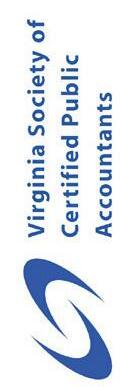
 BY COLETTE WILSON, CPA
BY COLETTE WILSON, CPA
When we hear the terms supervising, coaching and mentoring, many people think they are the same thing — an employer telling an employee what to do and how to do it. These instructions could be for ensuring continued employment, for advancement to a new position or for compliance with the firm’s human resource policies. But why are there different terms for seemingly similar actions? The answer: Because they are not entirely the same.
Supervising is a task associated with one’s job title. Coaching and mentoring are slightly different actions designed for specific relationships. While all three of these are very important aspects of one’s professional career, supervision is the only one that is generally considered a requirement. Let’s briefly explore these areas and shed some light on the importance of each.
Supervision involves directing the actions of direct and indirect reports and overseeing their projects for which the supervisor is accountable.
A supervisor’s goal should be to manage the functions, actions and progress of others in order to accomplish organizational goals and individual achievement. Setting employee goals and expectations, preparing performance evaluations, assessing and teaching technical skills, conducting team meetings and providing constructive feedback are all supervisor expectations that benefit the supervised employee. Supervisors generally do not have a choice in their role. This is assigned
If supervisors, coaches and mentors have the following traits, employees will be better served by the relationship.
Specific agenda with clear expectations and timeframes
Technically strong and resourceful to assist staff
Effective two-way communication
Accountability
Treats others fairly by being objective
Ability to see the big picture with a certain amount of success in mind
Desire for success of individuals as well as for the team/firm
Adaptability and creativity for those being coached
Vision and focus on individual strengths to make up for group weaknesses
Passion to help others with no immediate benefit for themselves
Experience and success in a specific area
Recognition of own talent
Availability to dedicate time Have nothing at stake
to them based on their position in the firm. For the firm to continue and grow, supervisors are also responsible for successful completion of projects, and more importantly, the grooming of employees who will advance in their skills. Employees in this relationship also have requirements. They are expected to perform tasks, meet expectations and advance in their knowledge, skills and abilities for their own advancement and, more importantly, for the benefit of the organization.
Coaching is a developmental and ongoing process or relationship
whereby instructions are given to an individual or team in order for them to excel. Coaching can also be thought of as targeted training with the goal of leading and instructing individuals toward higher performance results, which benefit and meet the needs of that person and also the group as a whole. For example, a coach within a firm could instruct an employee on the desired timeframe for passing the CPA Exam and meeting expectations for the next promotion level. This benefits both the employee and the firm without getting too much into technical skills (which is usually reserved for the supervisor to address). Other coaching areas could include decisions about continuing professional education courses to take, professional organizations to join, career path decisions to make and utilization of professional and technical strengths. Those being coached strive for peak performance, personal development and satisfaction of the stated goals.
Coaching is a great way to lead someone to personal success while also allowing the team to reap the benefits of that success. Coaches usually have options (multiple team members or employees) for meeting overall goals and generally take on this role willingly. They track progress towards these goals and make changes along the way. In this relationship, the coach also has options in terms of participation. They may choose to focus more heavily, right or wrong, on one employee versus another based on timing, the results the employees are showing and the imperativeness of the goals at stake. Do you really want to let your third string on the court in the fourth quarter when the score is tied?
Mentoring is the teaching and sharing of knowledge, skills and life lessons to a less experienced, and often younger person. The goal in this relationship is to guide and assist an individual in professional or personal development in a specific area. There are an unlimited number of areas in which mentoring could be conducted, but in our industry I think specifically about career development, improved public speaking, effective communication skills or refining a leadership style.
The task of mentoring is not one that is required. This relationship is based on one person’s desire to obtain the knowledge and guidance of a more experienced person. If a mentor relationship is to happen, it is generally the mentee who preemptively seeks desired guidance. There are times, however, when an experienced person chooses to take someone under their wing. Either way, the participation is a choice by both parties, unlike in a supervisor-employee relationship. The mentor should be willing to give of his/her time and knowledge, and the mentee should proactively follow up for feedback and additional guidance.
Key differences in these tasks can be summed up into three areas: (1) what’s at stake, (2) who’s in control and (3) the outcomes. I view supervision as the hardest task with the most at stake. The end results of effective supervision are effective, efficient and improved employee performance, client satisfaction, project completion and product
delivery. All of these are critical to the supervisor and the employee and they each play a specific role. Coaching is middle of the road where there are usually options for meeting the end goals. Mentoring has very little at stake as this is a purely voluntary relationship: each person gets out of it what they choose to put in.
In terms of control, the supervisor role has the clear-cut answer. Employees are pretty much required to follow their direction. Coaches are also in control, but often the person being coached can choose to not participate or to join another team. In a mentoring relationship, while the mentee may take the lead in pursuing a mentor, I believe they are equally in control after that. The mentor freely gives direction and guidance and the mentee chooses to adhere and follow up.
There can be two types of outcomes: desired and required. Supervisors have assigned roles with required outcomes for overall projects as well as desired outcomes for employee performance. Mentor relationships are generally for desired individual outcomes, while coaches have desired outcomes for both the individuals and the group as a whole.
Successfully implementing these roles depends in large part on the strength of the relationship. Relationships are built on effective communication and the right mix of people. Some of these aspects have been previously discussed in terms of knowing what’s at stake, who’s in control and what the expected outcomes are. But having the right mix of people is crucial. See the sidebar at left for some traits and skills that help ensure success in each relationship.
Developing successful professionals with strong technical skills and effective personal traits takes time, and often the involvement of people beyond someone’s boss. All employees will mostly likely have some type of supervision over their technical work, however, professionals at any level can benefit from one-on-one coaching and mentoring. I encourage accounting professionals to take time to assess their current positions and satisfaction with their professional advancement and personal effectiveness. Utilize personnel within your firm, contacts met through networking and resources available through the VSCPA to obtain the additional guidance you need to become a more successful CPA. n
COLETTE WILSON, CPA, is currently chair-elect of the VSCPA and is a member of the American Institute of CPAs (AICPA) Council. She spent more than 19 years providing audit and management advisory services to the federal government while at Cotton & Company LLP in Alexandria, as well as overseeing employee relations and recruitment .
* colettew@gmail.com connect.vscpa.com/ColetteWilson

 BY RYAN L. LOSI, CPA
BY RYAN L. LOSI, CPA
Late last year, after almost 18 months of behind-thescenes effort, the VSCPA invited me to take part in drafting important export tax legislation that was to be introduced during the 2014 Virginia General Assembly session. The legislation, if passed, would benefit small and medium-sized Virginia based exporters, enabling these exporters to receive full advantage of a vitally important but littleknown export tax incentive, known as the Domestic International Sales Corporation (DISC) Regime. Virginia HB 480 passed unanimously and on Feb. 27, 2014, it was signed into law by Gov. Terry McAuliffe. The legislation now takes effect on July 1, 2014.
One of the guiding principles of the VSCPA’s tax policy is to ensure that Virginia’s tax laws conform to federal tax laws whenever feasible.
The VSCPA, therefore, took leadership to ensuring passage of HB 480, through effective communications and sponsorship led by Del. Ron Villanueva (R-Virginia Beach) and Sen. Frank Wagner (R-Virginia Beach). As an active VSCPA member, a strong advocate for Virginia
exporters and leader of my firm’s national DISC practice with extensive experience within the DISC Regime, I was honored to work alongside the VSCPA to ensure passage.
DISCs are U.S. corporations meeting the special criteria of U.S. Internal Revenue Code (IRC) Sections 991-997, where a U.S. exporter can exclude a portion of its qualifying “export” income from federal taxation. Under the federal DISC rules, exporters pay their affiliated DISC a commission derived from exports and deduct those commissions from trade or business income. Qualifying commissions are not taxable to the DISC; instead, they are taxed generally when paid to the DISC’s shareholders as a dividend. These dividends will generally meet the criteria of a qualified dividend and will be taxed at a maximum federal tax rate of 20 percent. This results in permanent federal tax savings for the U.S. exporter and their owner(s) by eliminating the 39.6 percent maximum tax rate that applies to this portion of their ordinary trade or business income. It should be further noted that the
new 2013 3.8 percent Net Investment Income Tax (NIIT) may apply to these qualified dividends depending on the recipient’s particular set of facts. However, even though the permanent tax benefit may slightly be diminished by the NIIT, the net tax benefit still remains substantial.
Virginia typically conforms to the federal tax code, and as noted above, as it did with a previously vitally important export tax incentive known as the Foreign Sales Corporation (FSC) Regime back in 1995 by adopting VA Code §58.1-401.8. However, when the export incentive shifted to the DISC in 2006 after Congress had repealed the FSC Regime referred to in §58.1-401.8 and all other export regimes, Virginia failed to make a corresponding amendment to refer to the DISC in VA Code §58.1-401. Therefore, DISCs that were incorporated in Virginia were not authorized to take full advantage of the favorable tax treatment at the state level, as was the case with FSCs, leaving Virginia exporters at a disadvantage.
The passage of HB 480 into Virginia law, effective July 1, 2014, will spur additional growth in exports, promising to keep (and increase) jobs and capital investment in the Commonwealth. We can anticipate increased growth among a wide segment of the Virginia economy, including agricultural and forestry products, manufactured goods, software and other information technology products, biomedical products, minerals and mining products and other sectors. Every licensed and practicing CPA in Virginia needs to be aware of the DISC Regime and how it can benefit our client companies.
Virginia will once again allow its taxpayers to receive full advantage of this vitally important export tax incentive. In very basic terms, here’s how the DISC Regime works.
Under the DISC Regime, exporters pay their affiliated DISCs a commission from export income and deduct those commissions from income. Qualifying commissions are not taxable to a DISC; they are instead taxed when paid to the DISC’s shareholders as a dividend. That dividend is then taxed at a maximum federal rate of 20 percent, resulting in a permanent federal tax savings for U.S. exporters and their owners. Thus, they avoid the 39.6 percent maximum tax rate that applies to ordinary income on the portion of export income that is converted to a qualifying dividend.
Virginia DISCs would likewise not pay state corporate income tax on qualifying commissions, and Virginia would instead tax the dividend when distributed to the DISC shareholders.
Capital that would otherwise flow to accounts in neighboring states, as well as corporate charters and other fees paid to establish and operate DISCs, would remain in Virginia’s banking system and within the Virginia economy.
The ultimate tax benefits include:
>> The 19.6 percent differential between the qualified and the ordinary income tax rates
>> An income tax deduction for the exporting company, on the commission paid to the DISC
>> No corporate income tax for the DISC
>> For U.S. exporters who operate their business via a sole proprietorship or pass-through entity [e.g., limited liability company (LLC), S corporation or limited partnership (LLP)], the DISC benefit is generally the difference between the qualified dividend tax rates and the ordinary income tax rates.
>> Exporters who operate their businesses via a C corporation can benefit by using the DISC to eliminate double taxation on a majority of their export income, as well as to reduce additional payroll taxes on income paid to their shareholders/officers.
The fiscal impact in Virginia will be positive. The Virginia State Corporation Commission will see an increase in fee revenue. Incorporation fees and annual corporate maintenance fees, which are currently going to other states that recognize DISCs, would come to Virginia; fees paid to out of state professionals and support services (e.g., registered agents) will remain in Virginia. Virginia should expect this to also be a factor in attracting new companies to the Commonwealth by restoring this vitally important export tax program and once again showing that Virginia is devoted to supporting business. All licensed and practicing CPAs in Virginia should learn about this important new Virginia law, as it can benefit your clients. Feel free to contact me with questions. n
RYAN L. LOSI, CPA, is a shareholder and executive vice president of PIASCIK in Glen Allen, providing domestic and international tax services to a broad range of clients throughout the United States and abroad. Losi leads the firm’s international tax practice, advising clients in more than 50 countries spanning six continents.
* rlosi@piascik.com connect.vscpa.com/RyanLosi
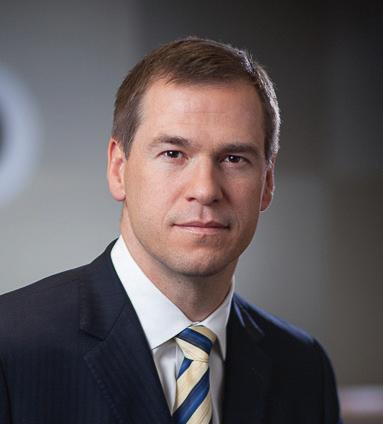
 BY CHIP KNIGHTON
BY CHIP KNIGHTON
Jane Cullipher, CPA, is a notable exception.
Cullipher was a sole proprietor in the tax industry when she married Mike Cullipher 20 years ago. At that point, she took over the bookkeeping responsibilities at his family’s farm, Cullipher Farm in the Pungo area of Virginia Beach. That only scratches the surface of her true responsibilities at the 250-acre farm, which has been in operation since the 1850s and grows greens, berries, soybeans and wheats.
She works in farm’s greenhouses and fields at Cullipher Farm, which has grown from three employees to 21 since she came on board. As a result, no two work days are ever the same.
“It’s just hard work,” she said. “It’s a physical tax season. Having had 400 clients, under the kind of pace that you run, I ran hard from Jan. 31 through April 15. That mental running, you do it physically [working for the farm]. It’s nonstop. If something breaks on the farm, you can’t just say, ‘I’ll get to that Monday.’ You could lose an entire grain house. It’s a 24/7 business.”
Admittedly, Cullipher is a bit of a special case in that she’s as comfortable with a tractor as she is with an adding machine. But many aspects of her farming experience are typical in Virginia’s largest industry.
According to the Virginia Department of Agriculture and Consumer Services, the agriculture industry provides more than 300,000 jobs in the Commonwealth, with an annual economic impact of $52 billion. Onethird of Virginia’s total land area is covered

by farms, ranging from industrial farms to livestock farms in Smithfield to small family operations like Cullipher Farm.
VSCPA member Jim Schmidt, CPA, represents one of those giant industrial farms. He’s the controller at Frank T. Williams Farms, which has operated out of 10,000 acres in Virginia Beach since 1994. Williams Farms grows wheat, corn and soybeans, the vast majority of which go to other farms to feed livestock.
“The only thing that we grow that a human being would eat is wheat, and it’s the wrong wheat,” Schmidt said. “In Virginia, it’s too hot to grow wheat for bread. Wheat for bread is called hard red wheat, and it’s grown in places like Kansas and Washington. Our wheat is used for cookies and crackers and things like that.”
Williams Farms is at the opposite end of the spectrum from Cullipher Farm. It’s 40 times as big, and while Cullipher is a one-woman show, Schmidt has five accountants in his employ.
While most of Cullipher’s customers come from South Hampton Roads, Williams sends its product around the globe.
“This is a global economy now. If you look at the East, that’s where things are happening now,” Schmidt said. “Two billion of the seven billion people on the whole planet are in China and India. If you look at China, that’s a lot of desert. If you look at India, it’s a lot of mountains and a lot of rain. That’s going to make it tough to feed their people.
“They can grow lots of rice, but what they want is protein. They’re emerging countries and their people want to eat meat. If you want meat, you need corn and soybeans. u
Not to go out on a limb, but it seems like a safe bet that the vast majority of CPAs don’t spend much time on a tractor in the course of doing their jobs.
They’re not able to grow products in the quantities they need because of the terrain and the climate. We’re very fortunate in this country to be able to grow food anywhere we want to, and we send it to them.”
Another major difference between the two types of farms is essentially marketing. For the past seven years, Cullipher Farm has run a Community Supported Agriculture (CSA) program, where consumers pay in advance for “shares” of the farm’s harvest and receive a weekly basket of seasonal produce. It’s a prime example of the “farm-to-table” movement that has grown in recent years, and has led to unique accounting challenges.
“You’ve got a lot of accruals in trying to figure out how much labor is going into these baskets,” Cullipher said. “You have to assign a cost to the program to figure out whether the program works. It’s working for us, but that depends on crops and Mother Nature. She’s been having a little fun this year.”
The CSA program tends to involve local consumers coming directly to the farm to get their produce, and it involves no small amount of promotion. In contrast, Williams Farms

doesn’t even have a website.
“If you were to buy a Smithfield ham or a Perdue chicken, you don’t pick it up and say, ‘I wonder who fed that chicken,’” Schmidt said. “We have no Web presence. We don’t have a sales force. It’s not necessary.”
Schmidt isn’t the only VSCPA member who does business with Perdue, the Marylandbased chicken processing company. Sue Hottel, CPA, is the controller at the Virginia Poultry Growers Cooperative (VPGC) in Hinton, near Harrisonburg.
The VPGC came about because of machinations between major poultry companies, and Hottel had a front-row seat the entire time. After working in public accounting and the nonprofit and transportation fields, the Harrisonburg native began her poultry career at Perdue, then accepted a position at Rocco Enterprises, which later became Cargill Turkey Products, before moving to WLR.
Those mergers were commonplace in Harrisonburg, where the main industry has always been poultry. Hottel worked for three of the four major players in the area, only missing out on Tyson. When she was employed at WLR, the company was sold to Pilgrim’s, marking that company’s first foray into the turkey business after working exclusively with chicken.
“They had never quite figure out how to make money in the turkey industry,” Hottel said. “They announced the closing of our plant. That was when some of our growers got together and decided to buy the plant and operate it as a cooperative.”
From an accounting perspective, things didn’t change much for Hottel, who by that point was well versed in the specialized niche of accounting for poultry. She was used to paying growers, calculating the costs of live birds and calculating the costs for the plant. The biggest change was that the co-op owners accumulated patronage equity in addition to shares of stock.
One of the biggest tasks for Hottel was familiarizing the owners with aspects of the business they hadn’t dealt with before.
“One of the issues that the management team has to work with is to make sure the board understands and manages not just the growing, live-bird side of the business, but also the plant side, the production side of the business,” she said. “Most of the board members are not as familiar with that piece. They had been used to growing turkeys and sending to them to the plants, and that’s where their responsibility ended. Now they’re responsible for the entire operation — everything from raising the birds to getting the meat to the wholesalers.”
Marketing-wise, the VPGC isn’t all that different from Williams Farms. The co-op doesn’t have a brand name, and all of its birds are sold to wholesalers. But in a town that was built on poultry, savvy consumers wanted to understand more about the origin of the poultry on their table.
“We have gotten into some specialty products,” Hottel said. “We do organic and we do nonantibiotic products. There is some demand for that, and we are trying to fill that need.”
In addition to balancing production in light of the markets for turkey and commodity grain, Hottel must determine where to deploy the company’s expenditures. The VPGC aims to get profits back to the owners as quickly as possible in the firm of patronage equity while leaving enough money in the business for operations.
“Turkey markets don’t always rise and fall at the same rate as the commodity prices,” she said, “so our income and expenses don’t always match up. We can have a very, very good year and then have a year that’s not so good, and they can come one right after the other.
“…We have always been a very conservative company, and our goal has been to have reserves on hand for the downturns. Every part of agriculture and agribusiness is cyclical. The goal is to make sure we had the reserves in place for the downturn.”
Agriculture has an annual economic impact of $52 billion in Virginia.
Commodity market pricing also plays a major role in determining the success of Williams Farms. Part of Schmidt’s role is to execute what amounts to an insurance policy with regard to the price of the company’s products.
“When bad things happen or wars break out, the market reacts to that very, very quickly,” he said. “Your prices can change nearly instantly. If you’re a producer and you want to get a margin and lock it in as closely as you can, you say to yourself, ‘I’m harvesting this product in June and selling it in August.’ So you go to the Chicago Board of Trade and look for the August price that’s out there. If it’s acceptable, you sell a contract.
“As long as you behave yourself and don’t overhedge and gamble and think you’re smarter than the market, if you do it patiently and try to meet in the middle, you’ll be okay.”
The nature of the markets for Williams Farm’s products leads to some counterintuitive thinking. To give a recent example, Russia’s incursion into Crimea created uncertainty that provided a boon to companies that produce basic commodities.
“Russia invading Crimea is a terrible thing, but whenever you have uncertainty, commodity prices rise,” Schmidt said. “Soybeans are fed to pigs and to chickens. Those prices were $13, $14, $15, $16. Our margins were tripled.
“If someone tells you, ‘You’re going to do the same thing you did yesterday, but we’re going to pay you three times as much for it,’ you’re pretty happy. I’m sorry for all the people who were hurt by it, but people need food.”
That doesn’t mean any rise in commodity prices is a good thing for Williams Farms. Petroleum is a key ingredient in pesticides and herbicides, to say nothing of its importance in transporting products.
To cut down on his own uncertainty, founder Frank Williams has worked to vertically integrate his business as much as possible.
“We own the grounds, the implements, the seed, the fertilizer, the equipment that puts the seeds into the ground and takes them out of the ground,” Schmidt said. “We own the trucks that carry the products to market and the tanks where you can store grain to sell at a later time.”
A similar philosophy has paid off for the VPGC, which has also benefitted from a period of relative stability in ownership. Several members of the co-op board have been in place since the founding of the organization.
Where Williams Farms looks to control variables as much as possible, the VPGC has focused on staying small and agile. It may seem different from buying up as many pieces of the business as possible, but the end goal is the same — eliminating uncertainty through a sense of control.
“Our goal is to have a very lean organization,” Hottel said. “The more overhead you have, the harder it is to make decisions. All of our decision-makers are basically located in one building. Before, you had to go to Texas to get a decision, and it could take weeks. It’s much easier when you’re not top-heavy, when you don’t have a lot of hierarchy built into the organization.
“…When you have processing plants in several states, at that point you start building the hierarchy to take care of it. At some point, you forget how to operate on more of a shoestring [budget]. Here, we’re one processing plant, one feed mill, one grain-unloading station. We have really strived to remember that we are not a huge organization.”
That same lesson is easy for Jane Cullipher to remember whenever she comes in from the greenhouse to reconcile her farm’s payroll. Her function would be outsourced at most small family farms — it just so happened that the scion of Cullipher Farm married a CPA who could handle the books.
Before she came on board, the farm’s tax department was, in her words, “literally a
shoebox on April 14.” As the farm has grown and its programs have become more complex, the accounting has become more challenging.
Cullipher Farm and other small farms have benefited from the aforementioned farm-totable movement. The farm has also worked to maintain customers by offering preparation tips with their produce.
“We’ve found that people are not going out for nicer dinners, and what they’re starting to do is cook at home again,” Cullipher said. “We’re trying to educate people about how to use the products. They’ll look at a rutabaga and say, ‘What do you do with that?’ We try to help prepare the consumers as much as possible.”
And that has helped to bring in new customers for the CSA program, which now operates on a first-come, first-serve basis for spots. The baskets show the breadth and quality of the farm’s products.
“The people who aren’t participating in it see the variety of what our farm has,” Cullipher said. “Even if they don’t get a basket, they want our heirloom tomatoes or some of those organic berries.”
From those locals who patronize Cullipher Farm to the foreign customers who buy Williams Farms’ grain, the food business is big business in Virginia. And CPAs are at the forefront of making those farms as profitable as they can be — whether or not they spend any time on a tractor. n
KNIGHTON is communications specialist at the VSCPA, as well as contributing editor at Disclosures magazine.
* cknighton@vscpa.com connect.vscpa.com/ChipKnighton @ChipKnighton

 BY GARY DITTMER, CPA
BY GARY DITTMER, CPA
The March/April issue of Disclosures reported that monitoring business tax reform is one of the top 12 business tax issues for 2014. This is a challenge not only for small to mid-size professional service firms, but to firms and companies of all sizes. In this piece, I’ll discuss some of the research techniques I have found useful and I’ll briefly review two significant proposals recently published: one from the chairman of the U.S. House Ways and Means Committee and the other from President Barack Obama, in the form of his 2015 fiscal year budget.
I am the tax director of a publicly held company, USA Mobility, Inc., which trades under the symbol USMO. We are in the telecom and software industries and are subject to the Sarbanes-Oxley Act. We are required to have documented controls and procedures for most activities in our tax department, including research. We are in all states, many local jurisdictions and a few foreign countries, and are subject to a variety of confusing, vague and poorly written telecommunications tax laws. For example, in one jurisdiction, a local law stated the telecom tax applied to only two-way communication devices (cell phones and two-way pagers). However, upon audit, they argued their law also applied to one-way pagers (devices that only receive, but cannot send, communications). We are taught the law should be interpreted based on common
English usage; i.e., one-way is different from two-way. Yet the local government prevailed. We lost at the state administrative review level and chose not to appeal based on the economics of the matter. This illustrates the challenges in attempting to comply with state, local and federal laws.
So how do you remain current with respect to tax issues, including new proposals to reform our tax system? There are, of course, no shortcuts to keeping your knowledge up to date. It involves effort and a logical plan. For example, our quest to remain knowledgeable must have limits; therefore, our plan should be focused on those aspects of law relevant to our work or our interests. This involves having the right resources and the time to devote to reading, comprehending and planning.
Time is a constraint that forces us to be as efficient as possible when attempting to remain current. For example, when reading an article, it is often difficult to determine if it is really the point of your search. So try reading just the first sentence of each paragraph until you decide the article is worth your investment; if it is, then you can focus on the most relevant parts of the article and skim the others.
Using resources and implementing written processes will help you follow current developments and new tax proposals. By resources, I mean both a trained staff and
access to a comprehensive online service that covers the sources of tax law. Examples of services are Checkpoint, IntelliConnect and Lexis-Nexis, and the VSCPA offers a member benefit with NIQ. These services also offer a variety of publications and analysis of current law, including daily email updates.
Commercial publishing services offer many online research pricing options, so be careful to subscribe to those elements that are relevant to your practice or industry. We use Checkpoint and a Telecom specialized service (TTR), but I have access to the premier services due to my role as an adjunct professor at both George Mason University and the University of Virginia. I find most research services are similar. One key difference is the efficiency of their search engine and how many clicks it takes for you to access relevant sources. Another differentiation is the quality of their analysis of existing and pending legislation. Ask for a trial subscription for a 30-day period to consider the differences among each service before making a commitment.
There are several low-cost research alternatives, including the U.S. Internal Revenue Service (IRS) website, which is linked to the Cornell School of Law.
The Tax Foundation is a nonprofit tax research organization that offers a variety of publications, including a free quarterly tax policy newsletter; you may sign up on their website at http://taxfoundation.org/ publications. u
Could everything you need to know about tax reform fill a thousand notes?
Another excellent source is the bipartisan Congressional Joint Committee on Taxation. It was established under the Revenue Act of 1926 and is instrumental in advising Congress on tax policy and analyzing proposed legislation. Most of its publications are available on its website at https://www.jct.gov/ publications.html.
In addition, the two Congressional committees responsible for our tax laws are
also great sources of information. The Senate Finance Committee (www.finance.senate.gov) typically initiates tax law by attaching a rider to proposed legislation. The House Ways and Means Committee (http://waysandmeans. house.gov) is responsible for initiating tax laws based on a requirement granted under Article 7 of the Constitution. The websites of both groups are important sources to gauge current and future tax policy trends.
The President may propose legislation, as is done in the annual budgeting process. You can find the President’s proposed 2015 fiscal budget at www.whitehouse.gov/omb/budget/ Overview.
Of course, it is wise to cultivate resources in larger firms or other companies in the same industry. These individuals, in addition to possibly being good friends, can help you in many ways by discussing current events and
Rep. Dave Camp (R-Mich.), chairman of the House Ways and Means Committee, has introduced the most comprehensive reform proposal since the U.S. Internal Revenue Code was modified in 1986. It includes individual, business and international provisions intended to simplify the Code. This proposal is the basis for an upcoming debate regarding our tax system and, most likely, it will not be formally acted upon until the next administration is elected. Here are a few highlights:
a. Reduces rates to 10 percent, 25 percent and 35 percent
b. Taxes long-term capital gains and qualified dividends as ordinary income, except for a 40 percent exclusion of gains and dividends
c. Eliminates personal exemptions
d. Increases standard deduction to $22,000 for married couples and $11,000 for single taxpayers — indexed for inflation
e. Subjects charitable contributions to a 2 percent limitation similar to the present limitation on miscellaneous itemized deductions
f. Eliminates Alternative Minimum Tax (AMT)
g. Eliminates deductions for state and local taxes
h. Simplifies education credits
i. Repeals deduction for personal casualty losses
a. Reduces corporate tax rates to 25 percent
b. Repeals Modified Accelerated Cost Recovery System (MACRS) depreciation — only straight line would be allowed — although depreciation
deductions would be adjusted for inflation
c. Capitalizes and amortizes research and experimentation costs over 60 months
d. Limits Net Operating Loss (NOL) deduction to 90 of taxable income
e. Eliminates AMT. Corporations would be able to claim a refund for their minimum tax credit carryforwards at 50 percent of the remaining credit.
f. Repeals Last In, First Out (LIFO) inventory
a. Replaces the dividend-received deduction with a new exemption at 95 percent of the amount paid by a foreign corporation to a U.S. shareholder that owns 10 percent or more of the foreign corporation
b. Significantly changes the foreign tax credit; repeals the indirect credit (Section 902). Introduces a new method of allocating costs to foreign source income.
sharing knowledge and other connections.
Consider using Connect, the VSCPA’s member portal, to cultivate these relationships and exchange knowledge with your peers.
By processes, I mean the written procedures you establish to conduct research and report your findings. For example, it is necessary to follow current and pending legislative changes and communicate these findings because they could have a significant impact on your or your clients’ business. It is also critical to research current tax issues resulting from audits or notices.
At USA Mobility, we have a tax accountant dedicated to researching current and pending state and local telecommunications and sales and use taxes in all 50 states and the District of Columbia. We have adopted a standard format for her to use in summarizing and reporting her findings. We save these reports electronically and distribute a summary to our staff and other employees requesting a copy. These reports are part of our internal controls
and are tested by our Sarbanes-Oxley auditors.
Research involving a current issue affecting our business due to an audit or a notice is tailored to the materiality of the claim. For example, many notices may be handled informally with a brief response and a copy of documentation the state agency is requesting. Other more significant issues are researched, reviewed and documented formally with a written comprehensive tax memorandum. The basic format of such a report normally includes these headings:
A. Issue B. Facts C. Law D. Conclusion/recommendation
These memoranda, based on materiality, may be reviewed by external tax consultants and our chief financial officer.
The national and regional professional service firms (law and accounting) typically have
departments dedicated to publishing client communications on new and pending law changes. How can you provide a comparable level of service to your clients?
A cost-effective technique for smaller firms is to subscribe to a service that provides client letters on timely matters involving tax and accounting topics. The American Institute of CPAs (AICPA) has excellent marketing materials available to members, including a client bulletin. Other organizations also provide such a service; to find additional sources, simply do an Internet search for “CPA client newsletters.” But what if you want to do something more personal? You will need to have an excellent research service and develop the talent to convert that research into a concise relevant client communication.
In addition to having an excellent research source, a firm needs to have excellent communicators. This is an area that has been challenging for our profession. We are trained as proficient technicians; however, our writing and communications skills may be lacking. A confident communicator other than a u
partner can be a valuable asset to a professional service firm. Partners are supposed to be excellent communicators, but speaking as a client, I am much more interested in the communication skills and competency of the staff I’m going to be working with.
Putting a plan in place now to stay on top of new tax laws and changes isn’t as hard as you may think. Follow these four easy steps:
1. Develop staff to be the firm’s primary tax researcher.
2. Provide research tools, such as online access and relevant publications, to support the research staff.
3. Document your research procedures and identify the key controls that ensure you are aware of new changes and interpretations of existing law.
4. Develop your staff to become effective communicators who are capable of preparing and presenting a presentation on

proposed tax changes. In addition to this benefiting the firm and its existing clients, it can be an effective marketing tool — make your staff superstars!
In no time, your firm or company will be able to handle business tax reform without a hitch. n
GARY DITTMER, CPA, CMA, CGMA, is the senior tax director for USA Mobility, Inc., located in Springfield. He is an adjunct professor at George Mason University and at the University of Virginia School of Continuing and Professional Studies where he teaches courses in taxation.
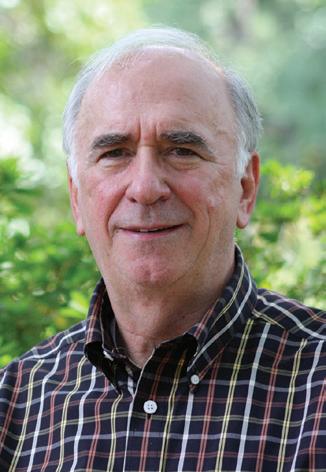
* gdittmer@comcast.net connect.vscpa.com/GaryDittmer
Are you/your professional staff really at the right level where you should be/you need them to be?
Are you/your staff in a position that truly suits your/their personality, values, and professional and personal needs?
If you’re seriously interested in making the “right” move for your next hire, I can help you. I am an actively licensed CPA in Maryland and Virginia with over 20 years of experience including public accounting (E&Y) and consulting (KPMG), financial accounting (American Cancer Society), internal audit (Moneyline Tele rate), and recruiting (Acsys, formerly Don Richards). As a networker who truly enjoys helping others and sharing my career experiences to guide fellow professionals, here is how I can help you:
Ask you questions, and most likely ask many more questions than other recruiters about your company, duties involved, skills required, corporate culture and more
Work with you on finding the “right” professional that is the “right fit”
Provide you with valuable information about the professionals I work with, the marketplace, what your competitors pay, and more
Guide you on career paths available in public accounting and industry
Enable you to capitalize on your strengths
Coach you on how to put your best foot forwa rd to find the “right fit”
Advise you when to stay in your current position if that is the right move
If you’re interested in working with a recruiter who understand s your background, skills, and is genuinely interested in helping you find the “right fit
then I welcome meeting you!
Recruiter
in CPA Firm, Accounting
in Metropolitan DC & Nearby Suburbs/B
for the state of Maryland,
 BY BILL FOOTE, CPA, AND DAVID SEMENDINGER, CPA
BY BILL FOOTE, CPA, AND DAVID SEMENDINGER, CPA
In July 2013, the Private Company Council (PCC) released an exposure draft simplifying the accounting for goodwill subsequent to a business combination. The alternative accounting model was then finalized by PCC in October 2013, subject to endorsement by the Financial Accounting Standards Board (FASB).
In January 2014, FASB issued Accounting Standards Update No. 2014-02, Accounting for Goodwill: a consensus of the Private Company Council (ASU 2014-02). ASU 2014-02 is significant because it relaxes the requirements of previous standard setting with respect to goodwill. The fact that ASU 2014-02 was the first ASU specifically for private companies also makes it noteworthy.1
Goodwill is a non-current asset that results from a merger or acquisition transaction (i.e., a business combination). Under Accounting Standards Codification 805, Business Combinations (ASC 805), goodwill is the residual value, calculated as the excess of (i) the fair value of the consideration over (ii) the fair value of the identifiable assets net of liabilities. Certain identifiable intangible assets acquired in a business combination are amortized over estimated useful lives. Goodwill, however, is not amortized.2
The accounting for goodwill subsequent to the acquisition date is spelled out in Accounting Standards Codification 350, Intangibles — Goodwill and Other (ASC 350). Issued June 20013, ASC 350 originally required each of a company’s reporting units to test goodwill for impairment annually using a two-step model. Step 1 involves comparing a reporting
unit’s fair value to its carrying amount. If the reporting unit’s fair value is greater than its carrying amount, no further testing is required. If the reporting unit’s fair value is less than its carrying amount, Step 2 is required in order to measure the amount, if any, by which goodwill is impaired. Step 2 of the ASC 350 impairment test requires a hypothetical purchase price allocation to be performed (as of the testing date) in order to measure the impairment loss.
In July 2012, ASU 2012-02 introduced an optional qualitative assessment prior to the performance of Step 1. Referred to as Step 0, the purpose of the qualitative assessment is to determine if it is more likely than not (i.e., better than a 50 percent chance) that a reporting unit’s fair value is below its carrying amount. The Step 1 (and possibly Step 2) test would then need to be performed only if it is more likely than not that a reporting unit’s fair value is less than its carrying amount. Examples of events/circumstances that companies can evaluate with respect to the Step 0 assessment are shown in the sidebar on page 28.
Over time, concerns have been expressed that the goodwill accounting model under ASC 350 was overly complex and burdensome. This led the PCC to place goodwill accounting on its agenda in 2013.4
ASU 2014-02 establishes an Accounting Alternative with respect to goodwill that private companies are permitted (but not required) to adopt. Under the new framework, goodwill can be amortized over a period not to exceed 10 years. While 10 years is the default amortization period, a shorter useful life is permitted if supported by the facts and circumstances. The Accounting Alternative, if adopted, would be applied prospectively generally to business combinations that occur after 2014. However, early adoption for 2014 or even 2013 business combinations (assuming the company’s 2013 financials have not yet been issued) is allowed.
But what about goodwill that’s already on the books? ASU 2014-02 states the following with respect to pre-existing goodwill amounts: “Goodwill existing as of the beginning of the period of adoption shall be amortized prospectively on a straight-line basis over 10 years, or less than 10 years if an entity demonstrates that another useful life is more appropriate.”
Private companies would still need to monitor goodwill for impairment under the PCC’s new goodwill framework. Unlike ASC 350, which mandated impairment testing at the u
•
Macroeconomic conditions such as a deterioration in general economic conditions, limitations on accessing capital, fluctuations in foreign exchange rates, or other developments in equity and credit markets
• Industry and market considerations such as a deterioration in the environment in which an entity operates, an increased competitive environment, a decline in market-dependent multiples or metrics (consider in both absolute terms and relative to peers), a change in the market for an entity’s products or services or a regulatory or political development
• Cost factors such as increases in raw materials, labor or other costs that have a negative effect on earnings and cash flows
• Overall financial performance such as negative or declining cash flows or a decline in actual or planned revenue or earnings compared with actual and projected results of relevant prior periods
• Other relevant entity-specific events such as changes in management, key personnel, strategy or customers; contemplation of bankruptcy; or litigation
• Events affecting a reporting unit such as a change in the composition or carrying amount of its net assets, a more-likely-than-not expectation of selling or disposing all, or a portion, of a reporting unit, the testing for recoverability of a significant asset group within a reporting unit or recognition of a goodwill impairment loss in the financial statements of a subsidiary that is a component of a reporting unit
• If applicable, a sustained decrease in share price (consider in both absolute terms and relative to peers).
Source: ASC 350-20-35c
reporting unit level, when a private company adopts ASU 2014-02 it makes an election to test all goodwill for impairment at either the reporting unit level or at the entity level. The entity level option may be attractive to companies that found it difficult to properly identify reporting units for purposes of ASC 350 compliance.
While ASU 2014-02 does provide for a goodwill impairment test, it is only required when a triggering event occurs indicating the fair value of the entity (or the reporting unit) may be less than its carrying amount. In evaluating whether a triggering event has occurred, private companies should consider the factors set forth in the Step 0 qualitative assessment (see sidebar at left).
The ASU 2014-02 impairment test is streamlined in comparison to the impairment model otherwise required by ASC 350. Under ASU 2014-02, the fair value of the entity (or reporting unit) is compared to its carrying amount. If the fair value of the entity (or reporting unit) is more than its carrying amount, no impairment is recognized. If the fair value of the entity (or reporting unit) is less than its carrying amount, then an impairment loss is simply recognized for the excess of the carrying amount over fair value.5 In that case, the adjusted goodwill balance (i.e., post-impairment) would be amortized over the remaining useful life.
All other things being equal, goodwill impairment will be less frequent if the Accounting Alternative is adopted. This is because the goodwill balance will be decreasing by at least 10 percent each year (creating a larger “safety zone”), unlike in the past when the goodwill amount remained static absent impairment. As always, goodwill impairment is a one-way street; once an impairment adjustment has been made, it cannot be subsequently reversed. In addition, it is important to note that business combination accounting under ASC 805 has not changed; the manner in which goodwill is determined on day one is still the same, whether a private company adopts ASU 2014-02 or not.
Now let’s take a hands-on look at the ASU 2014-02 goodwill framework. Assume XYZ Corp. (XYZ) has a fiscal year ending Dec. 31 and it adopts ASU 2014-02 on Jan. 1, 2014. XYZ acquires PDQ Corp. (PDQ) for $100 on Dec. 31, 2014. Accounting for the business combination under ASC 805, XYZ allocates the purchase price to the following PDQ assets and liabilities: working capital — $10; property and equipment — $10; customer relationships — $30; and goodwill — $50. Absent a triggering event, XYZ would record (as part of continuing operations) $5 of goodwill amortization in each year from 2015 to 2024.
But what if the business combination occurred prior to adoption of 2014-02? To answer, we’ll use the same hypothetical from above, but assume the acquisition date is Jan. 1, 2009, rather than Dec. 31, 2014.
Based on annual testing under the ASC 350 goodwill framework, XYZ previously determined that goodwill had not been impaired. As a result, the reported amount of goodwill on XYZ’s balance sheet as of Dec. 31, 2013, was $50. Absent a triggering event, XYZ would amortize
the goodwill balance over 10 years ($5 per year) starting in 2014, unless it can demonstrate that a shorter useful life is more appropriate.
The PCC concluded that its new goodwill accounting framework “will not result in a loss of decision-useful information to the users of private company financial statements but will reduce the cost and complexity associated with performing the current goodwill impairment test.” Not all private companies will choose the simplified Accounting Alternative, but those that do should see a reduction in the amount of time and money spent addressing impairment issues.
While the Accounting Alternative may make life easier for many companies, there are several reasons why it will not be universally adopted. First, ASU 2014-02 is optional, not mandatory. So some private companies may take the “If it ain’t broke, don’t fix it” approach and continue under the pre-existing ASC 350 model. Second, users of private company financial statements have a say in this. For example, many private companies must submit their annual financial statements to a third party such as a lender, and some lenders may prefer the preexisting ASC 350 goodwill accounting framework. Third, since
According to legend, an ostrich will shove its head in the sand when confronted with something unpleasant. I think you’ll agreeprobably not the best approach.

ASU 2014-02 does not apply to public companies, private companies need to consider whether they may in the future become a public company or be acquired by a public company. If so, it may be unwise to adopt ASU 2014-02, since it may later necessitate restating prior year financial statements (i.e., to undo the effects of adopting ASC 2014-02).
There may be additional changes on the horizon. Currently on the PCC’s agenda is an accounting alternative for identifiable intangible assets. In addition, FASB reportedly is going to consider if the goodwill accounting framework set forth in ASU 2014-02 can be appropriate for public companies and/or nonprofit organizations. n


1. ASU 2014-02 does not apply to public companies or nonprofit organizations.



2. Identifiable intangible assets with definite lives are amortized. Like goodwill, indefinite-lived intangible assets are not amortized.
3. Prior to the ASC 350 impairment testing model, goodwill accounting was governed by Accounting Principles Board Opinion No. 17, Intangible Assets (APB 17). Issued in August 1970, APB 17 generally required good will resulting from mergers and acquisitions to be amortized over a period not to exceed 40 years.
4. For information about the Private Company Council, see www.fasb.org/pcc.
5. If the Accounting Alternative is adopted, Step 2 of the ASC 350 impairment test (requiring a hypothetical purchase price allocation to be performed as of the testing date) is eliminated. Your dedicated Digital Benefit Advisors team of experts will guide you through how to make the most sound benefits decisions for your business and your clients.

Brian Marks, Executive Director P: 877.998.7272 www.digitalbenefitadvisors.com/vscpa
9954 Mayland Dr., Ste. 2200, Richmond, VA 23233

Endorsed by the VSCPA
BILL FOOTE, CPA, is a partner at Aronson LLC, a top-100 public accounting firm in Rockville, Md. He is practice leader for Forensic & Valuation Services, and currently serves on the VSCPA’s Professional Ethics Committee.
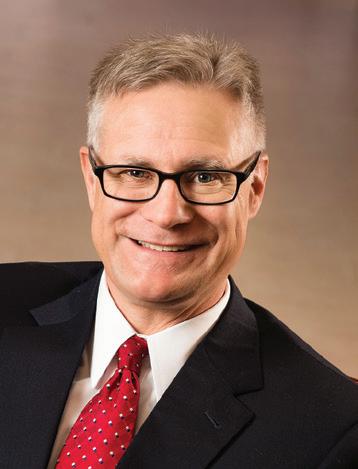

* bfoote@aronsonllc.com connect.vscpa.com/BillFoote
DAVID SEMENDINGER, CPA, is a partner at Aronson LLC, where he leads the Quality Control function.
* dsemendinger@aronsonllc.com








Participants at the 2013
The VSCPA is pleased to announce its second annual Leadership Academy, set for Nov. 17–19 at the CPA Center in Glen Allen. Young CPAs will discover their main strength at this event and learn how to cultivate it while helping to develop skills they need to excel in the CPA profession. VSCPA members 35 and under at the time of the application with valid CPA licenses and at least three years of experience in the CPA profession are eligible to attend.

Visit www.vscpa.com/LeadershipAcademy to learn more. n
Each year, you’re required to take an ethics course based on an outline developed by the Virginia Board of Accountancy. The VSCPA has you covered! You can fulfill the requirement with our ethics course, “Ethics 2014 — Your License Depends on It!” The VSCPA offers in-person, online and self-study options to help you meet your ethics requirement on your own schedule.
This year’s class was a team effort developed by VSCPA members Jim Cole, CPA, Clare Levison, CPA, and Chuck Overbey, CPA. The course also satisfies some of the requirements for licensure in Maryland, North Carolina, Tennessee and Washington, D.C. For more information on the requirements in those jurisdictions, contact the appropriate Board of Accountancy. Find all ethics info at www.vscpa.com/Ethics. n
The following firms were named to Accounting Today’s 2014 Top 100 firms:
Accounting Today also listed its “Regional Leaders” for the Capital Region (Virginia, Maryland, West Virginia and Washington, D.C.). Those firms were:
ARONSON BROWN, EDWARDS & CO. CALIBRE CPA GROUP COTTON & CO. GELMAN, ROSENBERG & FREEDMAN KEARNEY & CO. KEITER PBMARES RAFFA SC&H GROUP TATE & TRYON WATKINS MEEGAN YOUNT, HYDE & BARBOUR
Glen Allen firm PIASCIK has established a business management subsidiary, PIASCIK BUSINESS MANAGEMENT LLC, combining tax consulting with financial management solutions for athletes and others with significant wealth.
CHERRY BEKAERT was honored as one of Inside Business’s “Roaring 20” in Hampton Roads, which honors the regions’ most dynamic businesses. n
ARONSON BAKER TILLY VIRCHOW KRAUSE
CHERRY BEKAERT CLIFTONLARSONALLEN DELOITTE DIXON HUGHES GOODMAN
ELLIOTT DAVIS ERNST & YOUNG KEARNEY & CO. KPMG McGLADREY PRICEWATERHOUSECOOPERS RAFFA
BETH LLEWELLYN, CPA, has been named a shareholder at Richmond firm Gregg & Bailey.
MICHELLE VAUGHAN, CPA, has been promoted to supervisor at Mitchell, Wiggins & Co. in Petersburg.
MENSEL DEAN, CPA, has been named to the Blue Ridge Bankshares, Inc., Board of Directors. He is a partner at PBMares, LLP, in Harrisonburg.
KENNETH BRICKER, CPA, has joined Cherry Bekaert as partner in the government contractor services group in Virginia Beach.
Dixon Hughes Goodman has hired BRIAN BURNS, CPA, as a senior manager in its Forensic, Litigation Support and Valuation Services practice group and PAUL THOMPSON, CPA, as a partner. Both hires will work out of the Glen Allen office.
ED COLE, CPA, has joined the international tax team at Glen Allen firm PIASCIK.
MICHAEL GILREATH, CPA, has joined Dixon Hughes Goodman as a senior manager in the Glen Allen office.
Richmond firm Wells, Coleman & Co. has hired RACHEL KILGORE as a staff accountant.
MIGUEL WILBORNE, CPA, has joined TowneBank in Suffolk as an assistant vice president.
Dixon Hughes Goodman has promoted ASHTON BUTLER, CPA, LAURA GODFREY, CPA, JESSICA HEWITT, CPA, and DON CARLOS MCWHORTER, CPA, to senior associate and LEIGHTON HALL, CPA, and JAMIE MCFADDEN, CPA, to manager in its Norfolk office.
Richmond firm Wells, Coleman & Co. has promoted SAMANTHA COULTER to staff accountant, NICK KINSLER, CPA, to senior staff accountant and TERRY NEWBERRY, CPA, to manager.
Norfolk Southern named THOMAS HURLBUT, CPA, vice president and controller.


MARY LEIGH MCDANIEL, CPA, partner at Updegrove, Combs & McDaniel in Warrenton, was elected to the Middleburg Finanical Corporation and Middleburg Bank Board of Directors.
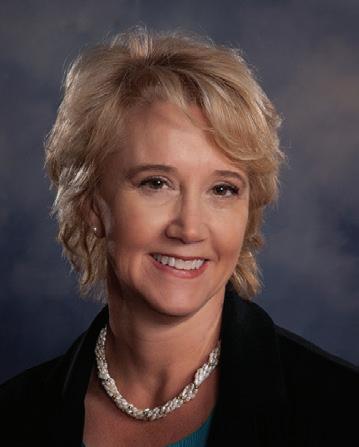
THOMAS SMITH, CPA, a sole proprietor from Goochland, has been honored as a Distinguished Friend of the Golden Brigade. The Golden Brigade, the 3rd brigade of the 82nd Airborne Division, was deployed to Vietnam in 1968 in response to the Tet Offensive and has given out the award only six times.
Reston firm CST GROUP has merged with HOLLIS RUSSELL DAVIS, CPA, PLLC n
Two Virginia accountants are among 55 winners of the American Institute of CPAs’ (AICPA) 2013 Elijah Watt Sells Award, given to outstanding performers on the CPA Exam.
JESSICA O’KEEFE of KPMG in McLean and STEFAN RICHTER of Ernst & Young in McLean were honored with the award. O’Keefe earned bachelor’s degrees in accounting and information systems from the University of Maryland, College Park, while Richter earned bachelor’s and master’s degrees in accounting from Pennsylvania State University. n
O’KEEFE, RICHTER EARN ELIJAH WATT SELLS AWARDS
HAROLD CAMP, CPA, a VSCPA life member from Halifax. A Navy veteran who served in World War II, he was a past commander of American Legion Post 8 and past president of the Halifax County Chamber of Commerce. He served on the VSCPA’s Legislative Affairs and Professional Ethics committees. He served as treasurer, moderator and Sunday school teacher at Ash Avenue Baptist Church.
VERNON “DOC” WINQUIST, CPA, a VSCPA life member from Norfolk. He was president of the VSCPA Board of Directors in 1971–1972 and also served on the VSCPA Educational Foundation Board of Directors. A graduate of the College of William & Mary, he served in the Navy Air Corps during World War II. He also served as president of the VSCPA’s Tidewater Chapter. n
Looking for the Self-Assessment Exam for 1 CPE Credit? We are no longer printing the test questions in Disclosures to save space, but it is still available online for credit at www.vscpa.com/ May2014DisclosuresExam. n
Brian Abbott Ted Achorn Govind Agarwal Christopher Ahern Christopher Allen Christine Andrews Matthew Andrews Ivanka Arbova Bank Assani Michael Attridge Carol Bassett William Beale Hendra Beekman Sheila Betz Kevin Birns Annette Bobby Timothy Boland Kevin Brady Tara Brooks Sarah Burka Allison Burkett Qing Cao Hyun Chae Maureen Champa Brian Channon John Clauser Shayla Coleman Michael Chrichton Suzette Dade Carlee Daughety Scott Davis
Alejandro Delgado David Dennison Lauren Deromedi Sarah Diebold Brynn Drabik Steven Eddy Alison Edwards Edward Elrod James Fine Bianca Fink David Fisher William Fisher Paul Fitzgerald James Fortenberry Seth Frazer Scott Gall Jean Garvin Emily Gilchrist Eric Glymph Colin Goldberg Lisa Gratz Sarah Green John Hagen Jr. Nathan Hall Julia Hand Michelle Haslett Fernando Hernandez Aponte Kirsten Hiles Matthew Hilliker Todd Holtzman
Sungjin Hong Brian Howe Stefanie Hranek DuyDang Huynh Tae Hwang Andrea Johnson Sharon Jones Julie Kavanaugh Olga Khanova Saleem Khoury Carly Kimball Stephen Kinnier Hawa Konde Micheal Kumar I-Rong Lee Jonathan Leonard Yanyan Lin Matthew Linkenhoker Jill Maier Jillian Marchant Andrew Marinacci Himali Mathews Caitlin Mayo Brooks McElyea Xu Mei Michael Mergler Rebecca Merrill Kevin Merrill Susanne Metz Mary Miller Jacob Moer
Kristina Morden Zachary Morris Ryan Muller Colleen Neary Ermias Nessibu Michelle NewmanLomasky Lauren Nurre Allyson O'Donoghue Nadia Pasicznyk Louis Perraud Danielle Phillips Jessica Powers Beverly Reid Kenneth Rhoades Kate Riabtchevski David Rodriguez Anne Rose Kristin Rosen Megan Ross Michelle Rubino Yuliya Rudenko Nathan Rudy Maryam Shabon Manbir Sidhu Larissa Simkovich Darcel Smith Adam Staley Matthew Stewart Evan Strong Nicholas Strong
Danielle Stump Andrew Suddarth Hye Sook Suh Zachary Surface Sabyne Syriani Ranelo Taguibao Tiffany Taylor Bryan Taylor Yoshiko Teaford William Townsend Rachel Trumbore Kaitlin Tuite Katrina Turner Julia Vigneault Yanping Wang Kai Wang Xiaomei Wei Kristin Wieroniey Brad Williams Aaron Xia Li Zheng Yang Zheng Rebecca Zimmerman
List from February and March. Compiled March 25, 2014. n
Two employees celebrate their eighth anniversary with the VSCPA: Education Specialist JANIE MEDLEY on May 5 and Finance and Human Resources Manager DIANE JONES on June 19.
Executive Vice President MAUREEN DINGUS, CAE, celebrates her seventh anniversary with the VSCPA on May 15.
POSITION: Academic & Career Development Director
BIRTHPLACE: Newport News
FAVORITE VACATION SPOT: The beach. Any beach will do.
RECENTLY READ BOOK: “Life” by Keith Richards
Education Coordinator TARA PENNINGTON marks two years with the VSCPA on June 18.
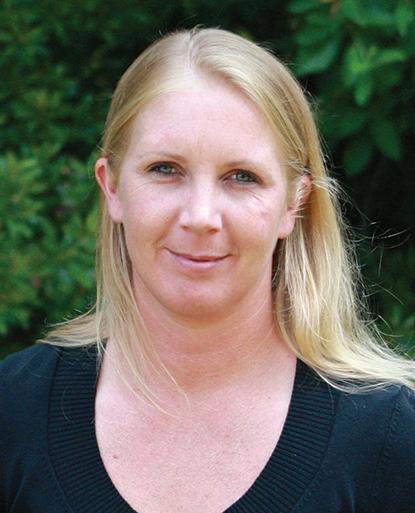

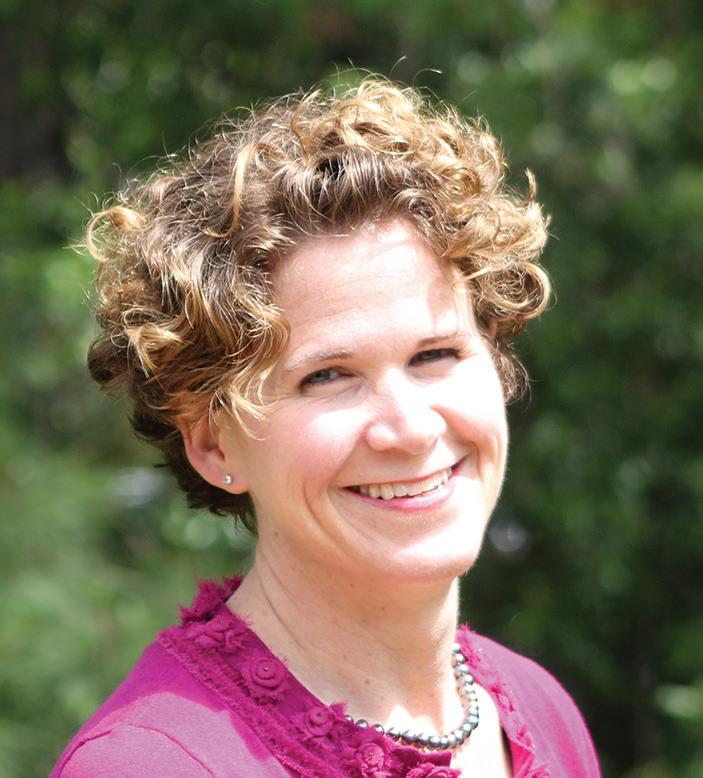
Information Technology Consultant RANDY COOPER has left the VSCPA. Good luck, Randy! n
PREVIOUS JOB: Development director at Meals on Wheels of Central Virginia. I focused on annual giving and special events including Zest Fest, its signature fundraising event.


Outside of work, I like to trail run, practice yoga, see live music at local clubs and spend time with close friends.
I love visiting with our members and attending VSCPA member events. The Leaders’ Summit and Leaders’ Institute are two of my favorites and I’ve met some great people along the way.
I studied and lived in Reading, England my junior year of college. I even took a class down the road at Oxford University. It was a great experience that I’ll never forget. I backpacked throughout Europe every chance I could — during school breaks, long weekends and holidays. n
We are accepting volunteers for various opportunities at different times during the year, although some are open year-round. Opportunities currently open are:
• Editorial Task Force
• Management of an Accounting Practice Task Force
• CPA Day of Service
You can sign up for the following volunteer opportunities in June and July:
• Media Ambassadors
• Legislators’ Tax Guide Task Force Visit www.vscpa.com/ VolunteerSchedule to sign up for your desired opportunity. n
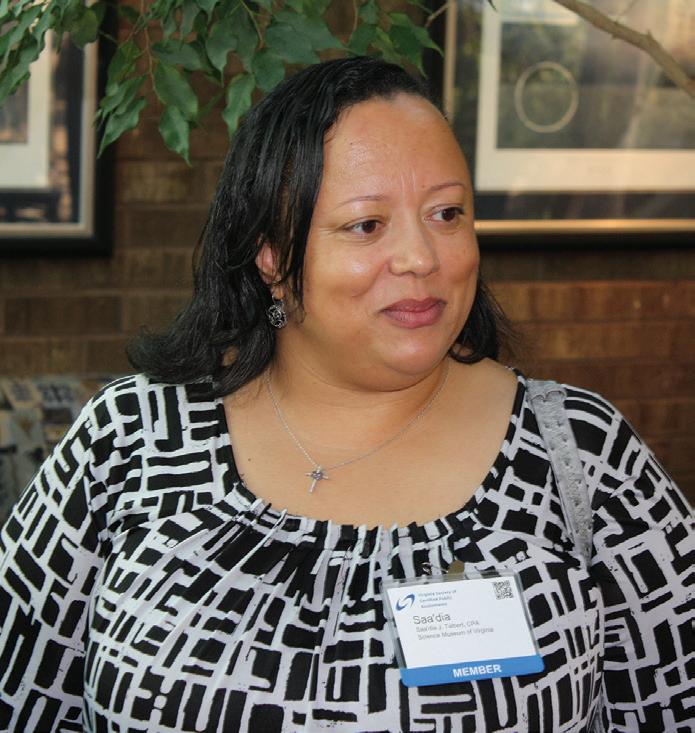
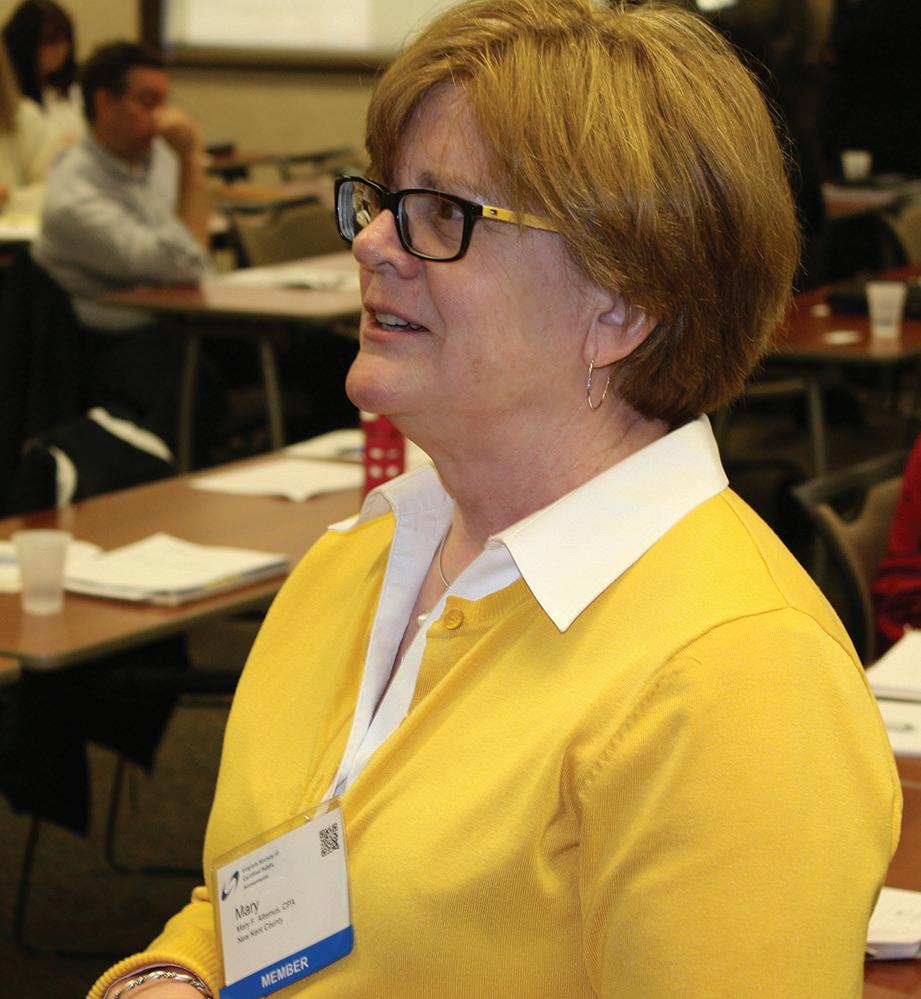

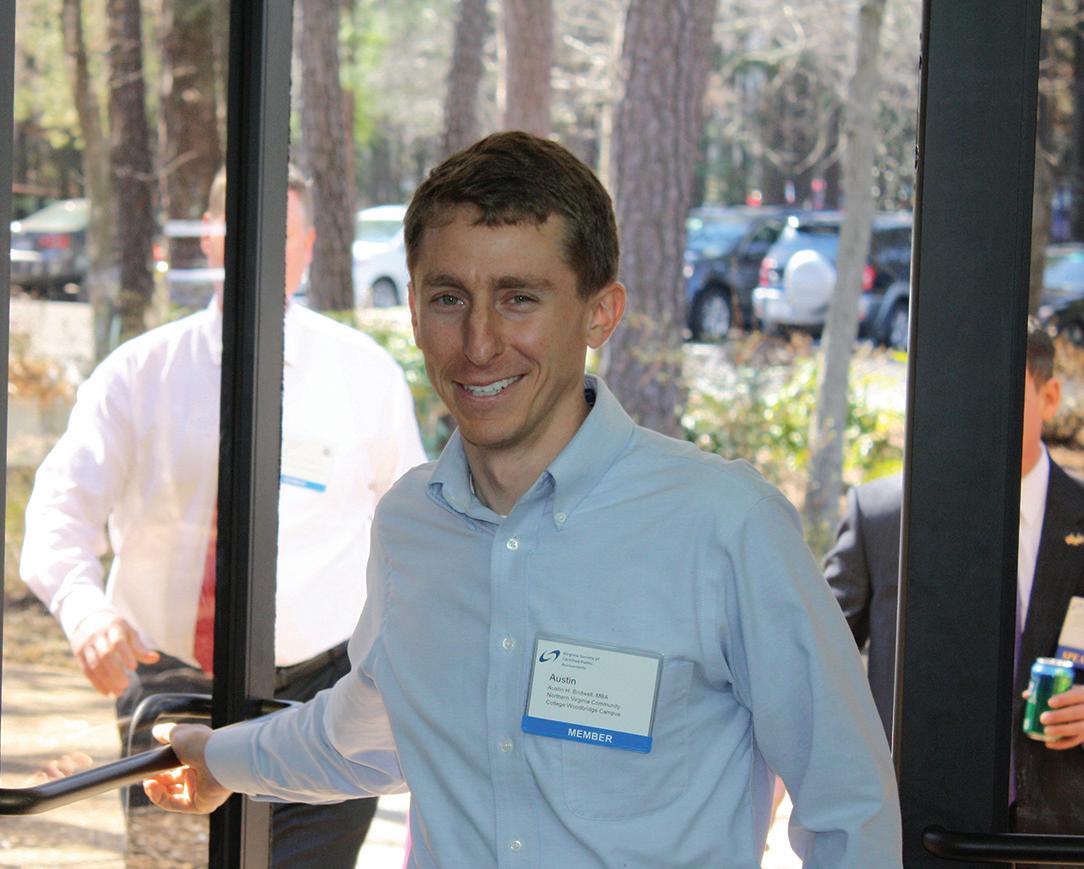


VSCPA 100% Member Firms show their commitment to their employees, the profession and the association. A 100% Member Firm is simply a Virginia CPA firm or company that has all of its CPAs enrolled as members in the VSCPA.

Interested in being listed as a 100% Member Firm? Contact VSCPA Member Relations Director Brenda Fogg at bfogg@vscpa.com or (804) 612-9409.
A.F. Thomas & Associates, PC
Anderson & Anderson CPAs, PC
Anderson & Reed, LLP
Anderson, White & Company, PC, CPAs Andrews, Barwick & Lee, PC
Barnes, Brock, Cornwell & Heilman PLC
Beale & Curran, PC
Beck & Company, CPAs, PC Bennett, Atkinson & Associates, PC
Biegler & Associates, PC
BlackHeath Company, PLC Bowling, Franklin, & Co., LLP
Boyce, Spady & Moore PLC Britt & Peak, PC, CPAs
Bruce, Renner & Company, PLC Bullock & Associates, PC
Burdette Smith & Bish LLC
Burgess & Co., PC, CPAs
Cameron, Moberly & Hamrick, PC
Charles H. McCoy Jr., Inc.
Charles S. Pearson Jr., CPA
Charles W. Snader, PC
Cherie A. James, CPA, PLC
Chesapeake Accounting Group PC
Christopher A. Enright, CPA, PLC
Cole & Associates CPAs, LLC
Coley, Eubank & Company, PC
Corbin & Company, PC
Craver, Green and Company, PLC
Creedle, Jones and Alga, PC
CST Group, CPAs, PC
Dalal & Company
David L. Zimmer CPA PC
Diane Y. Smith CPA PC
Didawick & Company, PC
Donald R. Pinkleton, CPA
Donald W. Coleman, CPA, Inc., PC
Douglas L. Thompson, CPA PLLC
Duvall Wheeler, LLP
Eggleston & Eggleston, PC
Elmore, Hupp & Company, PLC
Everett O. Winn, CPA, PLC
First Capital Bank
Frank Edward Sheffer & Company
Fritz & Company, PC
Garland & Garland, CPAs, PC
Garris and Company, PC
G.L. Roberson CPA, PLLC
Graham and Poirot, CPAs, LLC
Gregg & Bailey, PC
Gregory & Associates, PLLC
Gurman & Company, PLLC
Hantzmon Wiebel
Harris, Hardy, & Johnstone, PC Harris, Harvey, Neal & Co., LLP
Henley & Henley, PC
Henry R. Hortenstine III, CPA, PC
Hogan & Reed, PC, CPAs
Holland & Brown LLP
Homes, Lowry, Horn & Johnson, Ltd.
Honeycutt & McGuire CPAs
Hottel & Willis, PC Hughes & Basye, PC
Hunt & Calderone, PC, CPAs
J. Goddin & Associates, PC
Jay E. Reiner CPA PLLC
John M. Watkins, CPA
Johnson, Equi & Co., PLC
Jones, Adams & Delp, PC
Jones, Madden & Council, PLC
Jones & McIntyre, PLLC
Katherine L. Foley CPA, PC Keiter
Kositzka, Wicks & Company Kris McMackin CPA
L.P. Martin & Company, PC Lane & Associates, PC Larry D. Greene CPA PC Lauren V. Wolcott, CPA, PC Lent & Hawthorne, PC M. Lee Winder & Associates, PC Maida Development Company
Mallard & Mallard CPAs, LLC
Malvin, Riggins & Company, PC Martin, Beachy & Arehart, PLLC McPhillips Roberts & Deans PLC Michael B. Cooke, CPA, PC Michael R. Anliker, CPA, PC Miller Foley Group Mitchell, Wiggins & Company, LLP Moss & Riggs, PLLC Murray, Jonson, White & Associates, Ltd., PC
Nicholas, Jones & Co., PLC Norris & Associates, PC Paul Mitchell CPA CFP PBMares, LLP
R.T. McCalpin & Associates
Renner & Company, CPAs, PC Robinson Consulting Group
Roger L. Handy, PC Rubin, Koehmstedt & Nadler, PLC Russell, Evans & Thompson, PLLC Rutherford & Johnson, PC Salter & Associates, PC Saunders, Matthews & Pfitzner, PLLC
Scheulen, Patchett & Edwards, PC
Sells Hogg & Associates CPAs, PC Spencer, Hager & Mosdell, PC Spitler, Stephens & Associates PLLC
Stephen Merritt CPA, PC Stephen T. Shickel, CPA, PLC
Steve Guy & Associates, PC
Steve Walls & Associates, PLLC Stokes Office Solutions LLC
Strickland & Jones, PC Sullivan, Andrews & Taylor PC
Terry L. Jones, CPA, LLC
The Cahill Group, LLC
The Davidson Group, PC Thomas E. Fraley, CPA Thompson Greenspon Tongelidis Consulting, LLC Updegrove, Combs & McDaniel, PLC Verus Financial Partners Wall, Einhorn & Chernitzer W. D. Sanders & Company, PC Wells, Coleman & Company, LLP
Wilkinson Consulting & CPA PLC
William B. May Jr., CPA, PC Wineholt & Associates, PC
Yancey, Miller & Bowman, CPAs PLLC Yount, Hyde & Barbour, PC
Compiled April 3, 2014. Check www.vscpa.com/ 100Percent for a complete, up-to-date list.
Taylar Cannaday has gotten the money-saving thing down to a science. That’s why she’s made it her mission to spread the gospel of financial literacy to her fellow students.

Cannaday, a junior at Lynchburg College and a VSCPA student member, has spent her time in college cutting costs every way she can. Part of that comes from the H. Burton Bates Jr. Scholarship, which she received for the 2013–2014 academic year.
“I know students where that’s their main concern — getting out of school with a lot of debt and getting a job that might not pay that well and being able to manage the debt,” she said. “To be able to jump into a career and start my life debt-free is something that I can’t even put a value on. It’s something that a lot of students don’t have. I feel like it’s my duty to help students who aren’t in that situation manage it a lot easier.”
Cannaday got her first taste of the financial fitness movement as a high school student in Forest, when she began working at Central Virginia Federal Credit Union. She has continued to work at the credit union and has become a regular presenter at its student financial literacy seminars.
Taylar is driven to finish school and sit for the CPA Exam as quickly as possible. “I was able to work it out to where some of my credits from high school transferred in, and I basically took at least 18 credits every semester,” she said. “I didn’t plan on graduating early — it just kind of worked out that way. I knew I wanted to get 150 within the four years.” Taylar has a summer internship lined up at Baker Tilly and then one semester left before she graduates with 150 credits, ready to take the CPA Exam.
“I like the challenge of tax,” she said. “I feel like any situation is different and one variable can completely change how you see the individual or his tax return. It kind of goes along with financial literacy — being able to reduce someone’s tax liability is a pretty big deal, so if I can help reduce the liability for a person or a company, in the long run, they’ll have more capital.”
She also works with students personally to solve their financial issues. She worked with one classmate for six weeks on managing debt.
“Her main concern was credit card debt and her student loans,” Cannaday said. “Before she graduated, she was able to pay off her credit card and start working on her student loans.” n

SPACE SHARING ARRANGEMENT — L.D. Springs, P.C., CPA. Space sharing arrangement with established CPA firm located at 8001 Braddock Rd., Springfield, Virginia. Beautiful space in quiet professional building. Great location right on 495. One or two offices available including phone, internet, and copy/scan/printing services. Office sizes are 14x12. Conference room shared on a pre-schedule basis. Kitchen facility shared with occupants. Monthly rental at $1,000 per office. Minimum of one year term. Email: ispring@spring-cpa.com / Fax 703-503-8338 / Phone 703-503-5400 (Ext.17) / Mail 8001 Braddock Road, Suite 320, Springfield, VA 22151
The VSCPA now offers online classifieds! Monthly posting starts at $250. Plus, manage your ad online, include your logo and more!
Prefer printed classifieds in Disclosures? Contact us at classifieds@vscpa.com or visit www.vscpa.com and click on “Advertise, Sponsor or Partner” under “For Members.”
BUYING OR SELLING AN ACCOUNTING PRACTICE? Want a “clean exit?” Experience The Seamless Succession™ — to facilitate the absolute best transfer of your accounting practice. Learn more about our unique, 5-step process … and view our most up-to-date opportunities for purchase. Please visit www.PoeGroupAdvisors.com or email us at info@poegroupadvisors.com. 888-246-0974
VA1047 Middle Peninsula, VA $225,000 VA1052 North E. of Richmond, VA $285,000
Follow us on Twitter @ poegroupadvisor or check out our blog @ www.poegroupavisors.com/blog/

SALE/MERGER OPPORTUNITY — Well–established and diversified small Northern VA CPA firm seeks sale/merger opportunities. Practice clientele includes reviews, compilations, write-up services and three non-profit audits. The firm has a significant individual income tax practice as well as a variety of business tax returns. The firms enjoys a long-standing on-site and unqualified or pass peer review history. The firm is that of a sole practitioner seeking retirement or semi-retirement over the next 2 years. Growth and referral opportunities are excellent. Reply in confidence to #91, VSCPA, 4309 Cox Rd., Glen Allen, VA 23060 or vscpa@vscpa.com.
THINKING OF RETIREMENT OR A CAREER CHANGE? Naab Consulting has been assisting sellers of accounting and tax practices for over 17 years. We specialize in selling only accounting practices and therefore understand the market. We offer no-obligation, confidential on-site personal consultations to discuss your situation personally. We offer a large database full of qualified buyers, financing for your buyer and confidentiality throughout the entire process.
If you like the idea of an experienced professional to guide you through the selling process, please contact us today at 888.726.6282 or Retire@NaabConsulting. com. Mention promo code #24 for additional incentives.



Garland Creighton began his accounting career as an auditor with Peat, Marwick, and Mitchell (now KPMG). After leaving KPMG he started his own accounting practice, Garland Creighton, CPA, in Richmond. He counts his marriage to his best friend, Gwen, for more than 40 years and his two children and four grandchildren as his most rewarding achievements.
I AM PASSIONATE ABOUT… Caregiving for the elderly. After spending more than four years as a primary caregiver for my aging parents, I discovered that caregiving is not a spectator sport. The responsibilities that come with the title extend far beyond the limits of simply providing comfort and care. It’s an opportunity to make a difference in the life of your loved one. Taking care of those who took care of you may be one of life’s greatest demonstrations of love and humility.
PEOPLE DON’T KNOW THIS, BUT… In addition to being a CPA, I’m also an author. My most recent book, “Coming Alongside” (subtitled “Exchanging the Anguish and
Heartache of Caregiving for Laughter, Love, and Peace of Mind”), will be released in late spring. The book provides a front-row seat into the joys, trials and triumphs of caring for an aging parent or loved one. It’s a transparent look at an inevitable journey that each of us, at some point, will be asked to take but are totally unprepared for.
Three things: 1. Be the best ‘you’ that you can be and treat others the way that you would want to be treated. 2. Integrity, trust and committed relationships are all cornerstones to succeeding in business (and in life). 3. Your tomorrows will be here sooner than you think; learn to embrace and enjoy today!
Having a moment of prayer with my wife. In this go-go, high octane world that we all now live in, taking time to pray is how we launch our day. Despite the drama or occasional life-storm that may attempt to come our way, it’s been the power of prayer that has always sustained us.
I WISH MORE CPAs KNEW… That while it’s okay to geek out over numbers, it’s time to shed the super nerd image. We’re not “bean counters,” and pocket protectors went out with the 90’s. We’re a committed group of highly skilled and highly trained individuals who happen to be exceptional at what we do. We’re CPA Strong!
WHEN I TOOK THE CPA EXAM… The closest testing site to Richmond was in the basement of the Norfolk Scope; and you’d grind out the Exam the old fashion way — with pencil and paper. (Anyone out there remember those little blue exam books they’d pass out for the essay portion?) To this day, I still cringe at the thought of taking “The Exam.”
I AM A CPA BECAUSE… I’ve always been intrigued by numbers and finance. I enjoy helping businesses and individuals position themselves to achieve success by being fiscally responsible, yet never losing sight of their moral compass. n
We hard to



